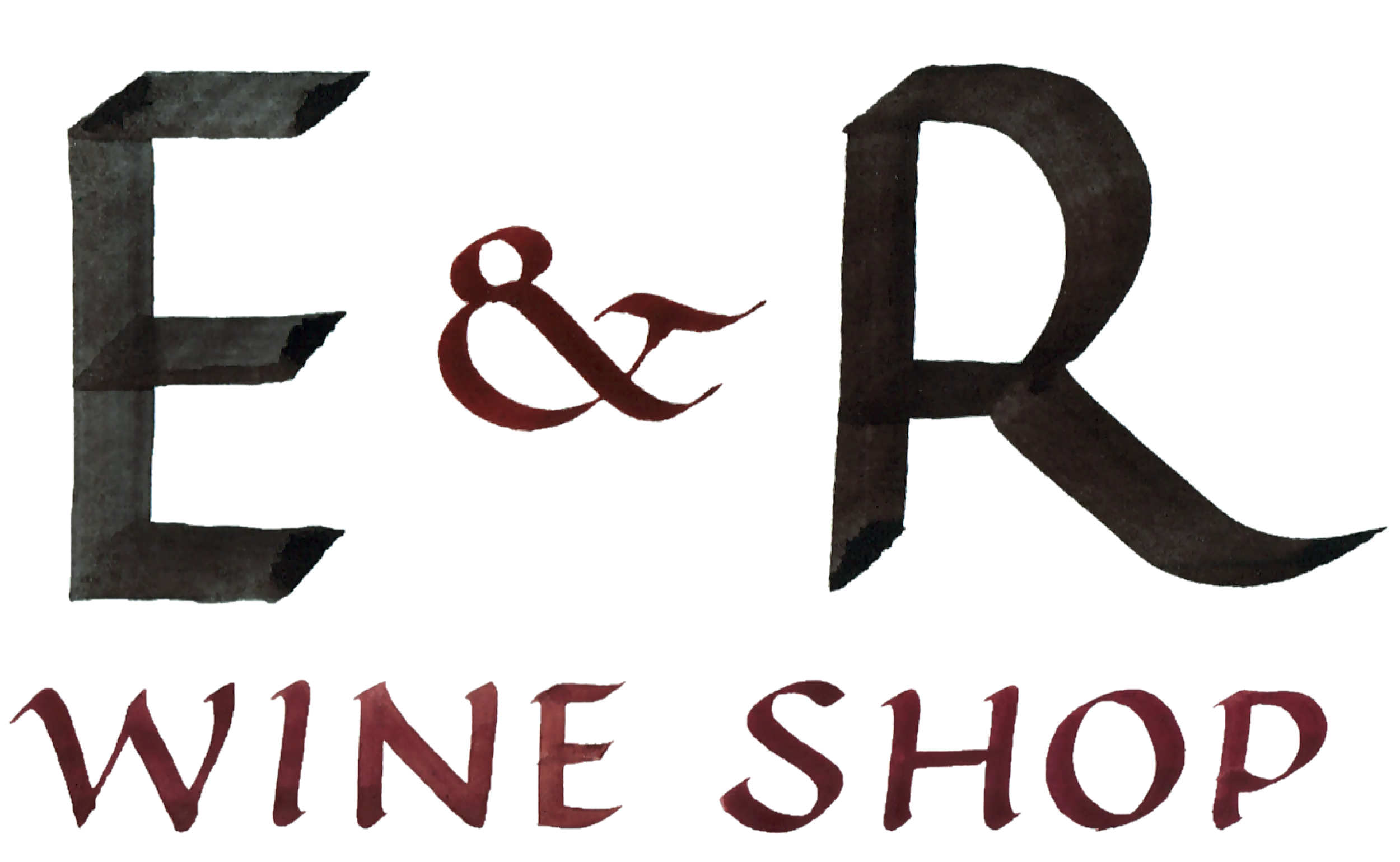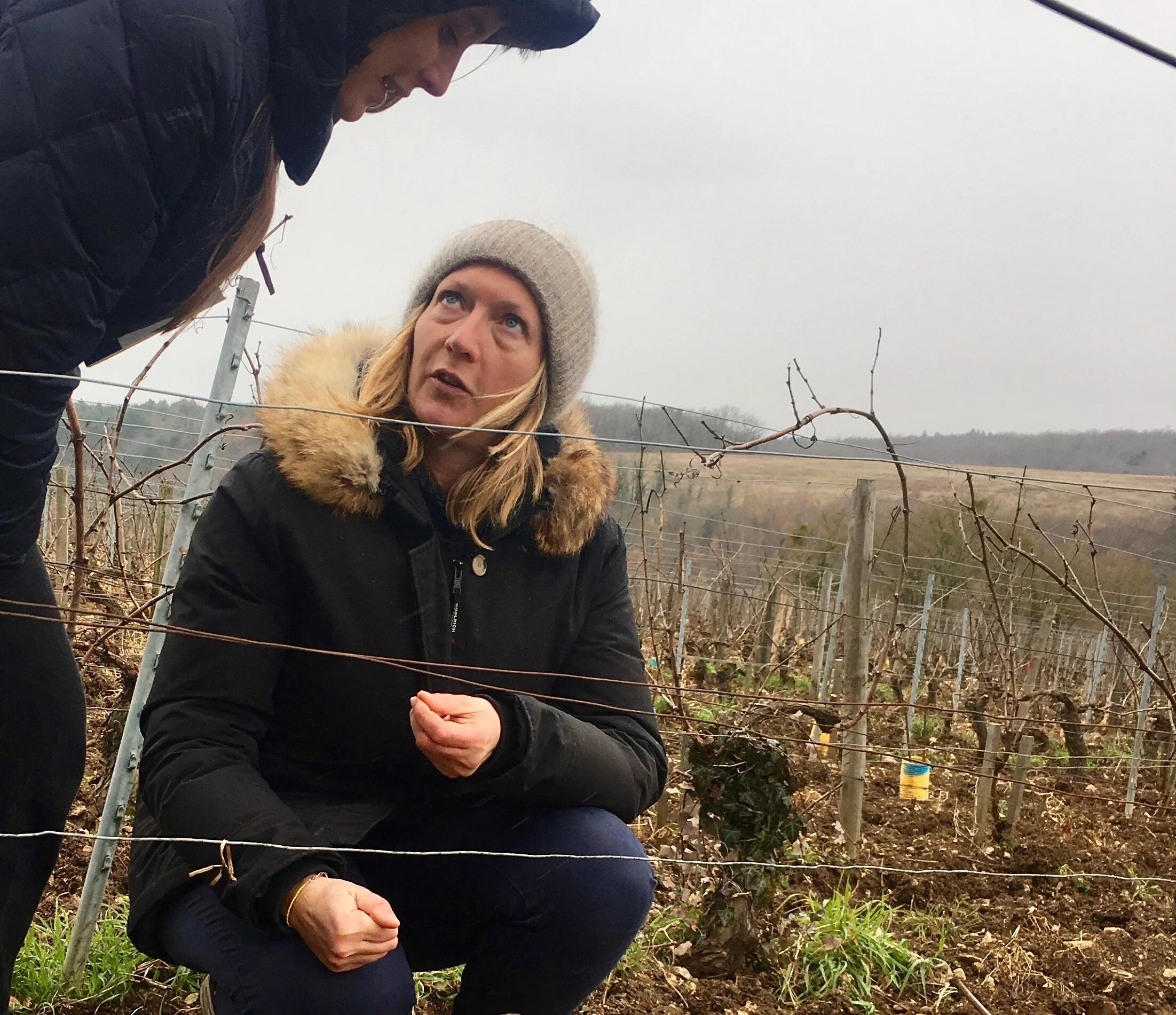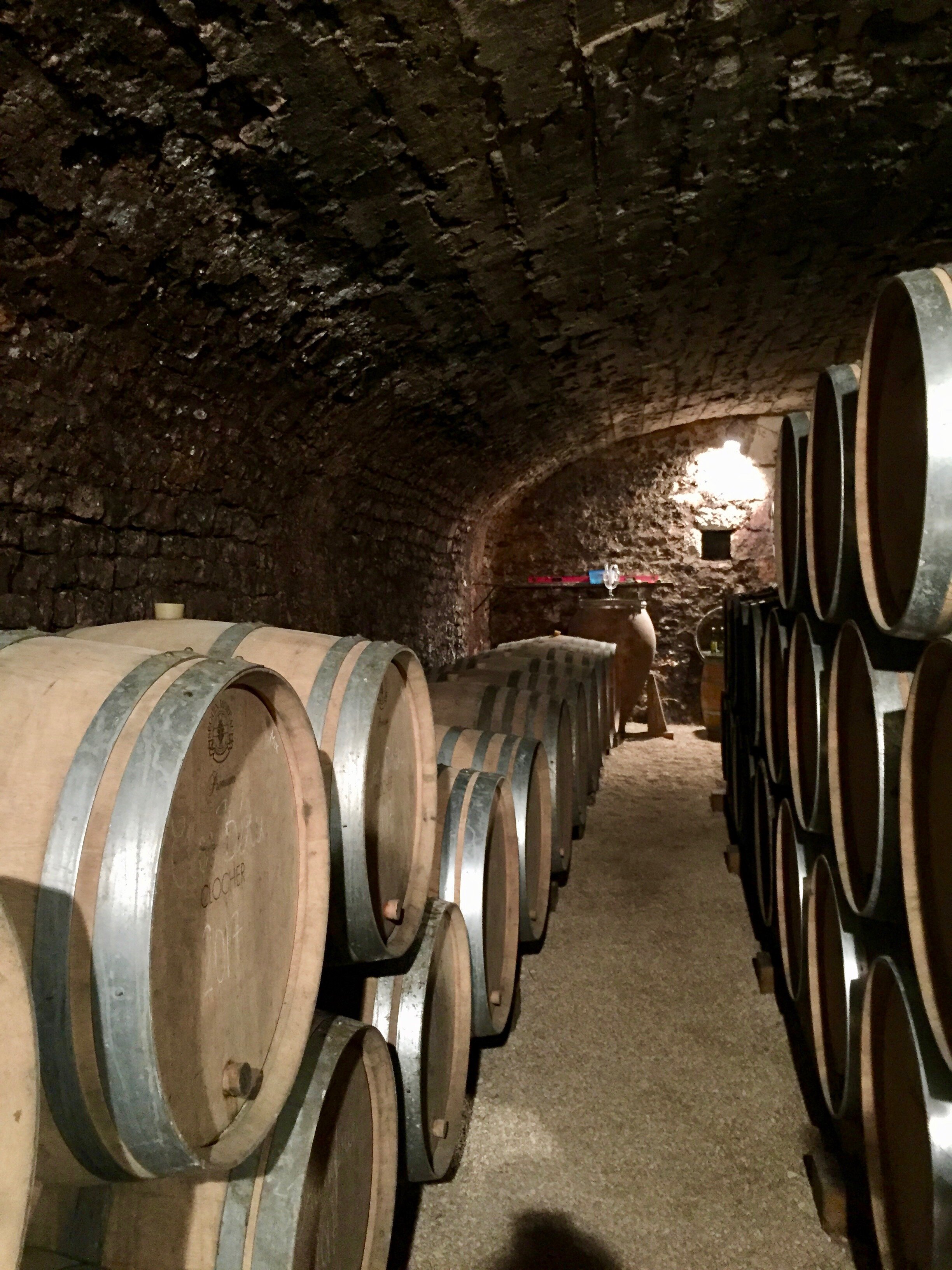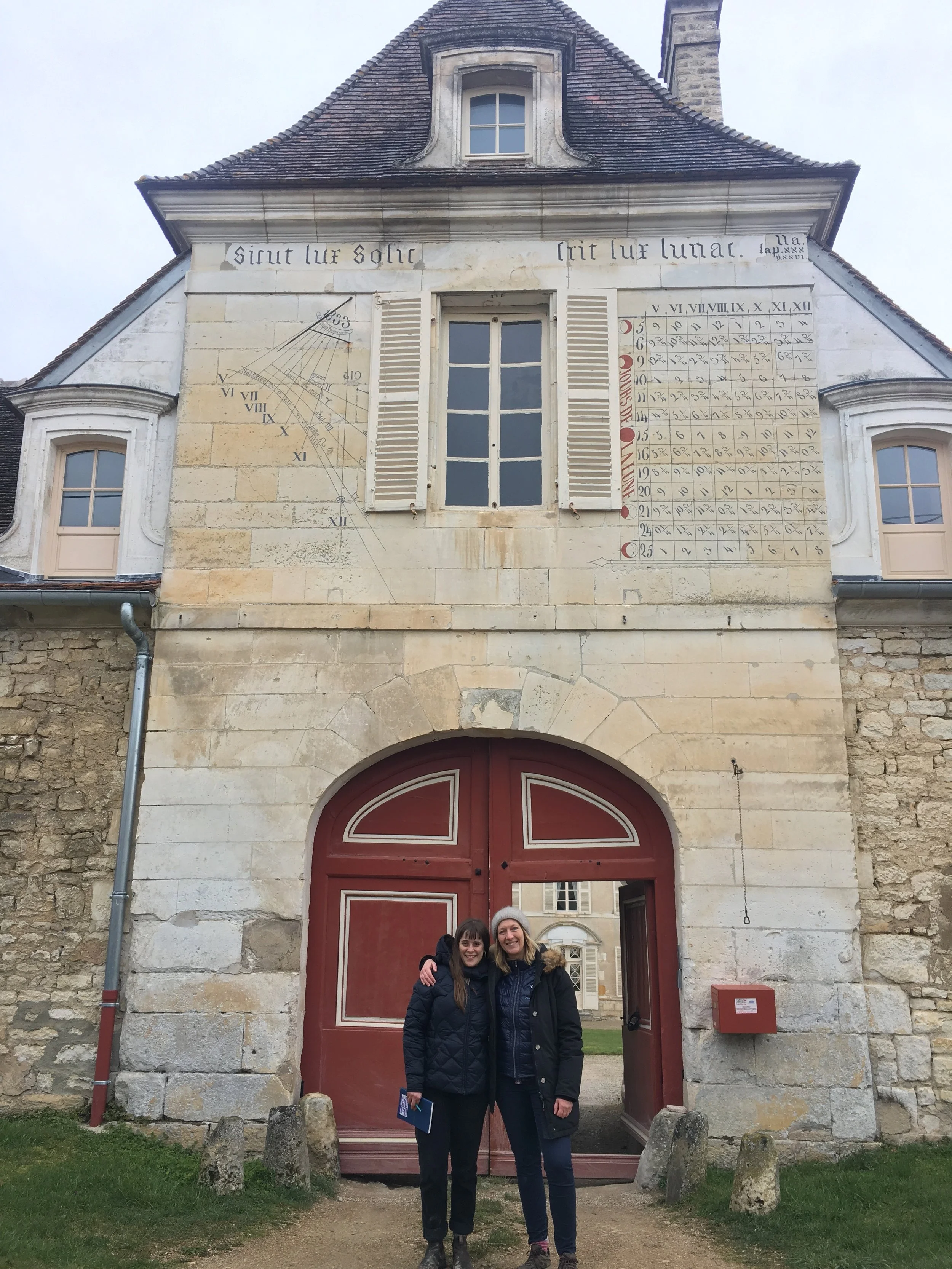Château de Béru — Burgundy, France
Béru, a village in the Chablis region is a two hour walk from the grand crus of Les Clos and Les Preuses—in the same way E&R Wine Shop is a two hour walk to the Zoo. All of the wines produced from this unspeakably quiet village of Béru are called Chablis, labeled as village Chablis, no premier or grand cru parcels. We are thrilled by the wines made here by Chateau de Béru. Athénaïs de Béru’s wines are wines of exceptional character, land farmed for 20 generations but re-discovered by fresh vision. We are offering small quantities of four Chablis wines from Chateau de Béru.
Lovers of Chablis should wander through the terroir of Béru, a hill to the east and a little south of the grand crus. It is a town away, distant from the cosmopolitan center of the village of Chablis. Béru is just a little bit wetter than the other parts of Chablis and at elevations between 350 and 400 meters is the high point of the region. This place looks in the winter like the surface of the moon. The ground is white with Kimmeridgian limestone made of old shells. At some times of year one sees dramatic white slopes punctuated by big plumes of smoke and small figures of vignerons burning grape canes from la taille - pruning in the spring. Béru has a bit more juice beneath your feet because the soil has a touch more clay, and more woods on the outskirts. Clayey soil can’t help but produce silky, fat chardonnay.
Athénaïs, the winemaker since 2006, inspires this place to rise up to optimal quality. The land has been planted to grapevines since the 12th century, but skipped a generation between the phylloxera outbreak and Athénaïs’s father, Comté Éric de Béru replanting the family’s 15 hectares of chardonnay in 1987. Nineteen generations of winegrowers prior to them farmed grapes here.
clos béru
looking inside
When the former tenant of the Béru vines (who had been farming them from the 90s to early 2000s) decided to retire, Athénaïs left behind a career in finance in Paris for the opportunity to farm Chateau de Béru. Athénaïs became the full-time winemaker and farmer in 2006. Her special interest was, and is, the Clos de Béru, a south- and southwest-facing walled vineyard adjacent to the Chateau, walled in white stone by the Potigny monks in the 12th century. The winery, every part of it, is situated in a cellar that these same monks built in the 12th century. The walls echo with hundreds of years of good wine.
As soon as Athénaïs took over in 2006, she switched the farming to organic. She came fresh from viticultural school in Beaune and an apprenticeship at an organic estate in Savigny-les-Beaune. Although the task of reclaiming her family’s vines was a large one, she forged ahead with excitement to try the techniques she had learned in winemaking school. With observant eyes and spiriting curiosity, she slowly learned to farm her family’s vines and took over the parcels gradually.
dynamizing equipment for biodynamic sprays
Her mentors, organic farmers, were reacting to how Burgundy’s vineyards suffered from mechanical farming. Athénaïs has had the good sense to apply their vision as well as going an extra step and using biodynamic treatments in the vineyards since 2009. She chose to do this because when she would taste a wine she felt had intensity and energy, nine times out of ten it was farmed biodynamically. In an interview with Cuvée Magazine, Athénaïs says “the choice of biodynamic viticulture really demands a lot of passion, but I don’t want to complain. We are a lucky generation, the roads of organic and biodynamic practices have already been paved for us. It was the generation 20 to 30 years before us who really did the hardest work; the pioneers, who still had to figure out what the best way would be. Whereas we modern hippies benefit from their results.” Today the winery is certified organic by Ecocert and certified biodynamic by Demeter.
She says it took her about five years of biodynamic farming to notice any changes. On E&R’s visit in 2018 she was spraying the vines with a homemade horsetail spray, an herb rich in silica that grows in the same fields. Around the time of the spring equinox, Athénaïs said, the main source of energy is reversed from the moon (in winter) to the sun (in spring). In biodynamics, the vines are understood to derive more energy from the moon in winter, and more energy from the sun in summer. The vines, when pruned, exude a sap-like substance when you cut into them of the sun’s energy rushing things along. There is a wild frenzy when the sun’s energy becomes potent again — so Athénaïs sprays horsetail, the glassy silica acting moonlike on the plants and slowing their frenzy. The vines must be weaned off the moon, they are so anxious for the sun.
béru in late spring
The horsetail spray is just one treatment among many in the biodynamic repertoire. Athénaïs sees these changes as improving the health of her vineyards and increasing yields in some years. She’s already faced challenging vintages like 2016 when she lost all of her grapes to frost, but her commitment to the health of the farm through techniques tailored to her place mean that the vines are living on healthy soil. Their chance of survival is high as their roots dig deep into the seabed, pulverized seashells of ancient Kimmeridgean times, for salty, iodonic tones.
the old cellar, which lets air in but not out — good construction back in the 12th century!
Athénaïs also represents a generation of winemakers who are reclaiming handwork and classical forms of mentorship in the vineyards. In the long life of grapevines, she recognizes that her impact as an individual is small, so it’s ever-more important to teach the next generation about farming, to continue the lessons of her teachers. We are also pleased to taste and offer a range of Chablis that are made with indigenous yeasts and no intervention.
Fame and acclaim sometimes cloud the larger picture of a region, as in, the picture that is made by its details. Chablis is an incredible region for Chardonnay for centuries, but poor farming can lead to an exhausted soil, and therefore an anonymous wine. In villages like Béru where historically farmers sold wines to co-ops, this means that consumers haven’t experienced yet the character of these places. Béru’s wines in the past were blended in with wines from all over the place, but now wine lovers have the gift of chardonnay from this place and only this place.
Athénaïs reflected on the 2018 vintage: “a real gift. The quality is there, the quantity too. The perfect state of health of the grapes allows harvesting serenely at the rate of the evolution of maturity.
Vegetation starts early, while escaping the spring frosts this year. Late spring and summer are both hot, sunny and dry, helping to ward off disease. In fact, from April to September, the vineyard experiences extraordinary weather conditions with rainfall below seasonal norms, while sunstroke and temperatures are above average.”
Click each wine for more detail.
Chateau de Béru Chablis Clos Béru Monopole 2018
Chardonnay from a small and special place, inextricable from Athénaïs and the long line of her family members tending this small vineyard. In the glass, this wine is dense and hazelnutty with depth of salt and fat white Burgundy lovers feast on. The Clos de Béru is the parcel immediately adjacent to the family’s castle and was replanted in the 80s at the planting density of 6500 vines per hectare from a massale selection of vines. The vineyard is at 300 meters elevation on a very thin lime-clay topsoil on Kimmeridgean limestone. A true clos, surrounded by the same wall since the 12th century, recognized for its exceptional terroir since then. The 2018 is a delightful vintage, unusual concentration of both fruit and acid. Gently pressed chardonnay which is then fermented (always with native yeasts) and aged in larger oak barrels and foudres, not fined or filtered, and with only the smallest addition of sulfur. The Clos Béru is a great wine to sock away for ten years or more
Chateau de Béru Chablis Terroirs de Béru 2018
The Terroirs de Béru is a kind of calling card, a blend of several stainless steel vinifications from all of the parcels of Chablis that the winery farms, treated rather simply. The wine offers a great deal of transparency and approachability young. Lots of yellow apple and fall fruits, with an earthen-toned hint of the bark of the tree as well. From the winery: “reflects the distinctive identity of Béru, within the Chablis Appellation. Because our vines are planted on top of the hill of Béru, they benefit from a unique micro-climate, influenced by a wide daily temperature variation and strong winds, which contribute to the specific balance of the wine. There, we grow small, concentrated and fully mature grapes which bring mineralogy to our wines.”
Chateau de Béru Chablis Montserre 2018
Chablis at its best is eye-opening. A glance at unknown depths of the earth, the silence of the depth of the limestone. Athénaïs’s winemaking leaves the view clear and unobscured with native yeast and no fining or filtration. 12 months in neutral barrel, then another 6 months in vats. Fleshy and beautiful chardonnay, with the clear-eyed limestone salt of Chablis playing a strong role thanks to the hands-off winemaking. Montserre is the highest point on the Béru hill. The name Montserre literally means the mount of the Serres, the “Serres” being a typical geological conformation made from piled up fossilized sharp limestone layers. Wines from this terroir express a strong personality, marked by its texture and concentration, mineral, salty, smoky notes and hints of iodine.
Chateau de Beru Chablis Cotes Aux Pretes 2018
Salty butter and lemon rind in the glass, a slice of Béru’s white Burgundy beauty. Aged in old oak barrel for 12 months, then another year in large vats to further develop the wine. Natural wine with no fining, filtration, always native yeasts, and very low sulfur. From the winery: “Literally, the « Hill of the Priests », this name refers to the nearby paths followed by pilgrims on their way from Vézelay to Santiago de Compostela. This spectacular vineyard, perched on the top of the hill of Béru, forms a dome beautifully exposed to sunlight and to the wind. The soil is characterized by the presence of small eroded Kimmeridgian rocks. The Côte aux Prêtres Chablis is a very nervous, sapid wine, with salty iodine mineral notes.”
(LB)











